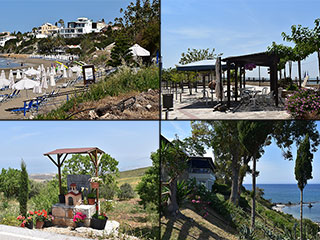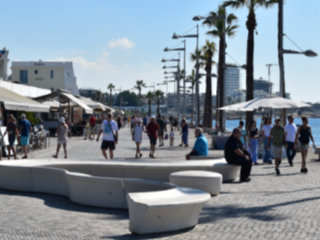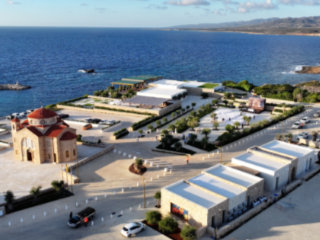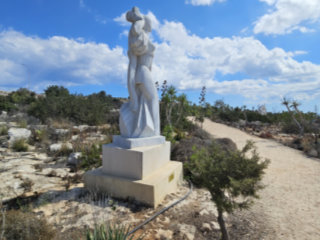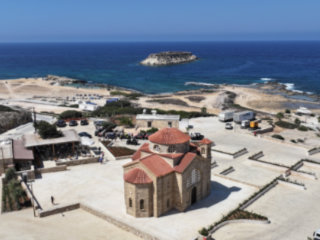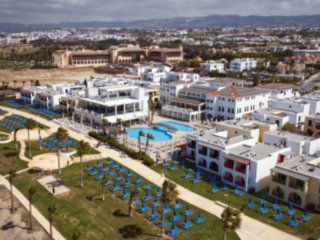From Toumpallos to Saranta Kolones
Forts Upon Forts
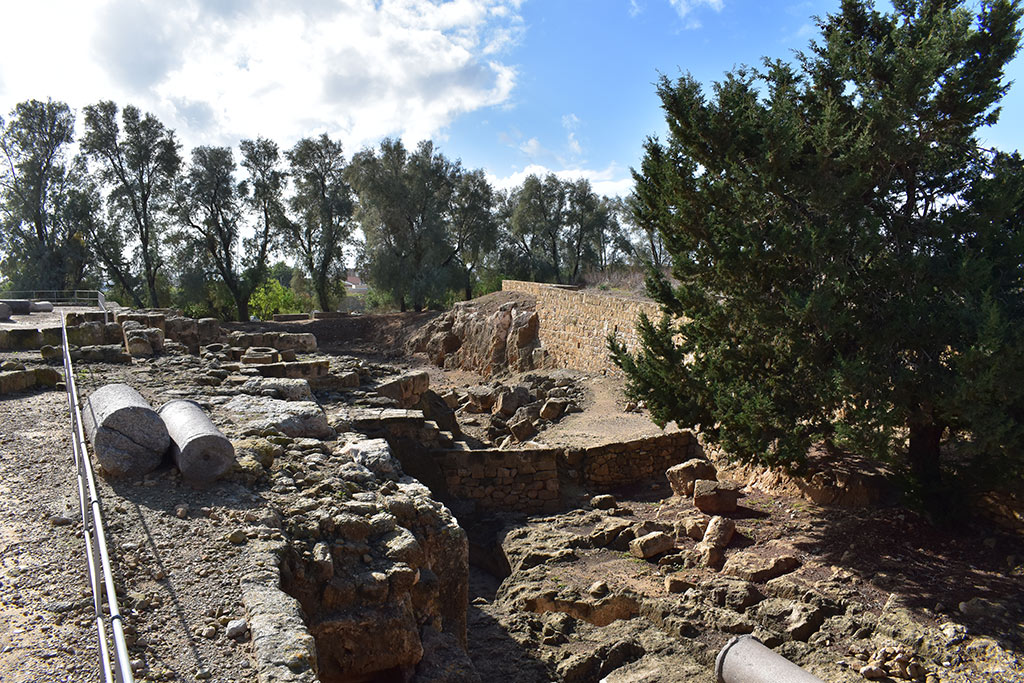
According to the results of the excavations the Fortress was built in the 7th century A.D, evidently in order to protect the Nea Paphos harbour and the city from the Arab raids. The entire construction is surrounded by a massive quadrilateral wall, 70 x 70m and 3m thick, as well as by a trench. At this wall there were eight towers of various shape, among them a pentagonal in the northeastern corner. The fortress's entrance was at the eastern square tower and was approachable by three parallel arches. In the same wall there were seven flights of stairs leading to an equal number of exits to the trench. The inner part of the fortress consisted of an open square courtyard 35x35m with one tower in each corner. At the courtyard's four sides there was an equal number of massive piersbearing[sic]*arches supporting a second storey. Several flights of stairs led to the storey; only a very few of them have been preserved. Ath the courtyard's eastern side there was also a fifth, horse-shoe shaped tower with a door, serving as the main entrance.
[128]
* I'm not sure, but I think "piersbearing" may have been a mistranslation of "loadbearing".

Top Level
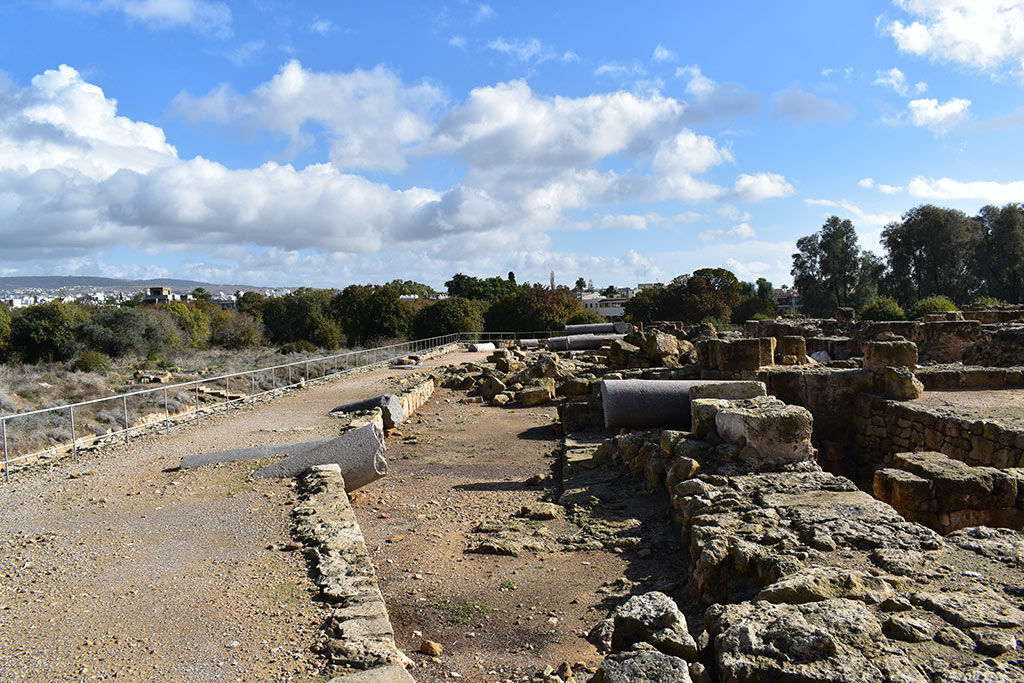
The book concludes:
During the long period of the disarmament, agreed upon between the Byzantines and the Arabs the fortress was abandoned, but was remodified aroun the end of the 10th century, when Cyprus has already come under the absolute conrol of the Byzantines, and in the end of the 12th century to the Lusignan dynasty. It was finally destroyed by the earthquake of 1223 and has been rebuilt. [sic]* In much later times a room that housed two Lenoi - grape-presses - was built at the ruined courtyard of the fortress.
[129]
* I think they meant to say "has not been rebuilt".
Entrance
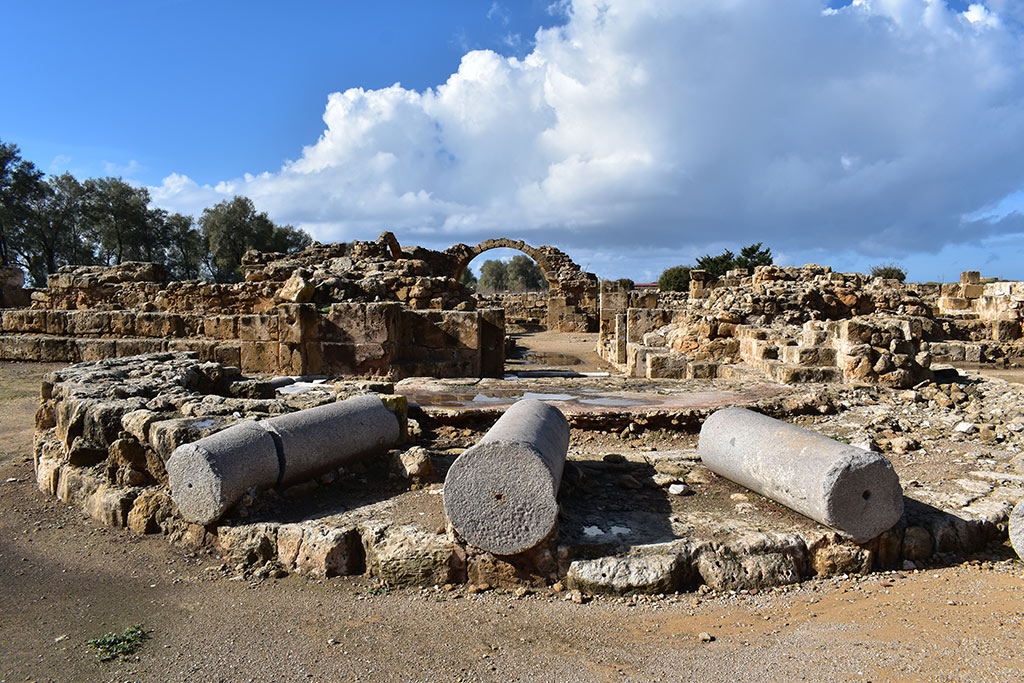
So, you have two slightly different accounts of the history of the fortress. It doesn't matter which one you choose to believe, just go for a wander amongst the ruins.
Underneath The Arches
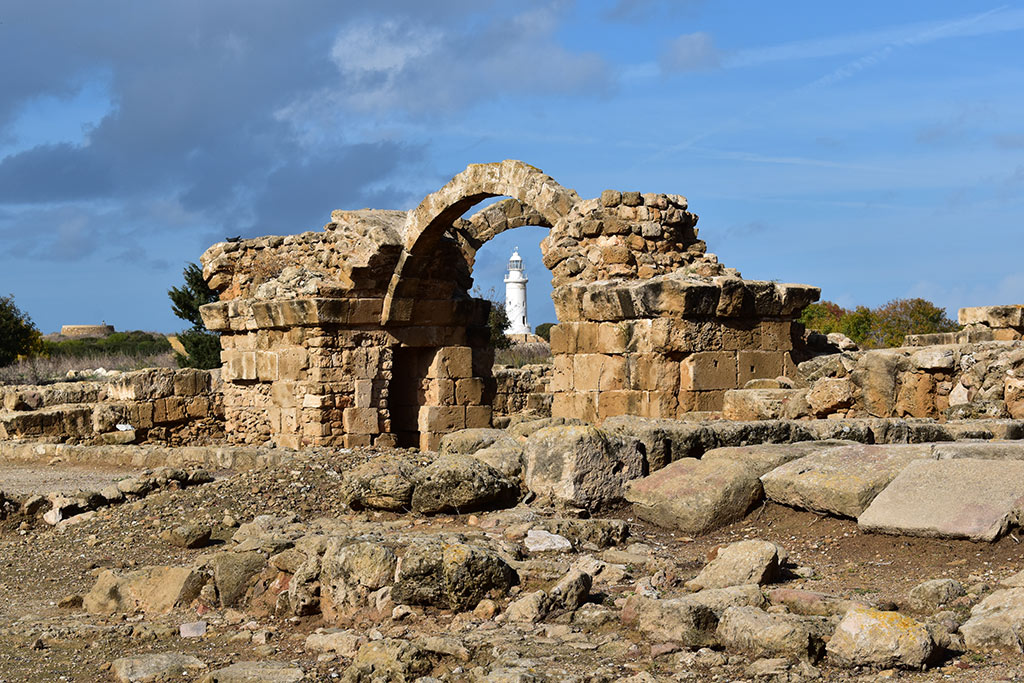
Couldn't resist this shot...
Inner Court
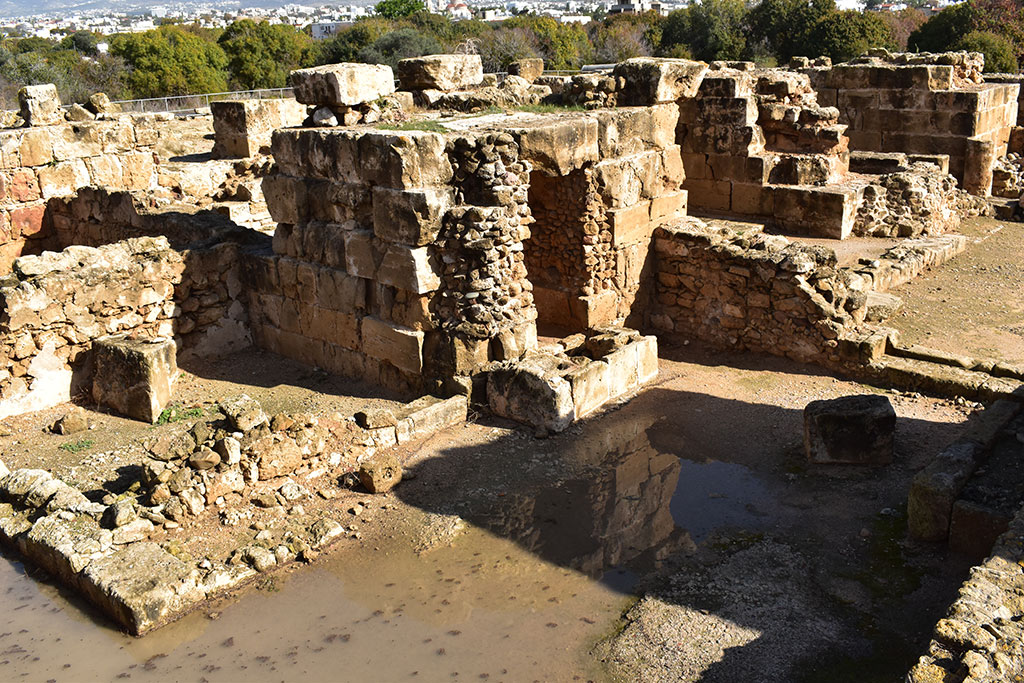
What's so great about this place is that there are very few restrictions on where you can wander, and those that are in place are only there for your own safety.
Page 8 of 10


Related Blogs:
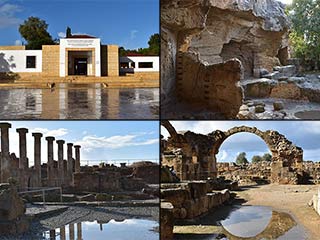
Paphos Archaeological Park - Summary
We first blogged about the Archaeological Park a couple of years ago. It was a short blog, and focused mainly on the pretty spring flowers. Now we are returning, to give the rest of the park the attention it so richly deserves.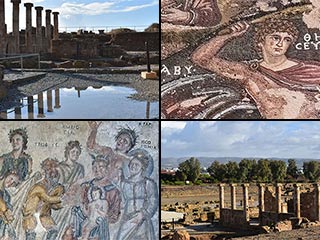
The Houses of Aion and Theseus
It's time now to start our detailled look at the Archaeological Park, so let's begin at the beginning. Once you enter the Archaeological Park, if you keep left, the first sites you will arrive at the The Houses of Theseus and Aion. Let's take a look at their mosaics and other attractions...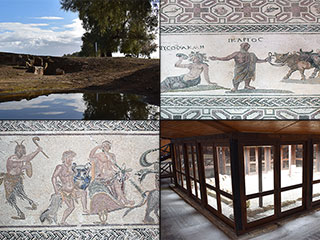
The House of Dionysos
The House of Dionysos is the jewel in the crown of Paphos Archaeological Park - a fine collection of well-preserved mosaics, conveniently located under one roof." When people refer to the mosaics in Paphos, they are usually talking about this place. So let's take a look.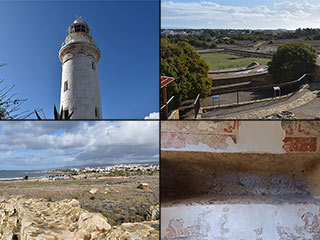
The Lighthouse and Beyond
The third blog on our Archaeological Park walkabout takes us from the Lighthouse, along the ancient city wall, to the far corners. The going is a bit trickier here, and not suitable for wheelchairs, but if you fancy a stroll it is well woth the walk...Good Pages To Visit

FB PagePaphos Life on Facebook
Like us on Facebook and stay notified of new blog posts.

FB PageOur Facebook Chat Group
Paphos Chat has been created for people who like our site and want to chat using Facebook. You can also easily upload photos of any size here. A lot of people are members of the Facebook chat group and the main forum. It's entirely up to you.
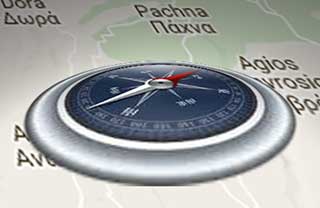
ListBlog Locations
Planning a day out? Then use our map of blog locations as a handy guide. Some of the places we visit our closer to each other than you might think, so take a look and start planning your next adventure...
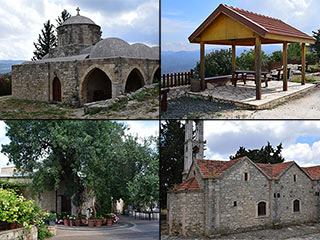
eBookCyprus Road Trip 01: the Kathikas - Panagia Loop
Let me take you on a journey around the region of Paphos, Cyprus. Starting at Paphos itself, we travel to Akoursos, then Kathikas, Kritou Terra and Simou. We continue past Lasa and Kannaviou, before taking in the delights of Panagia. Getting a bit more adventurous, we visit the abandoned villages of Statos and Agios Fotios, before passing through Choulou, Letymbou and Polemi, and rejoining the main Paphos - Polis road.
The route is suitable for all types of vehicle, and requires no off-roading. The guide contains about 130 photographs including shots of all the road signs you need to pay attention to, as well as some of the highlights you may experience along the way.
There are also several maps which will help you keep your bearings.
You can do this journey in a day, or you can break it up into chunks. You can also do it in reverse, to get some completely different views. It is entirely up to you.
